How to Create an Eco-Friendly Office: Effective Green Workspace Design Strategies by 8 Steps
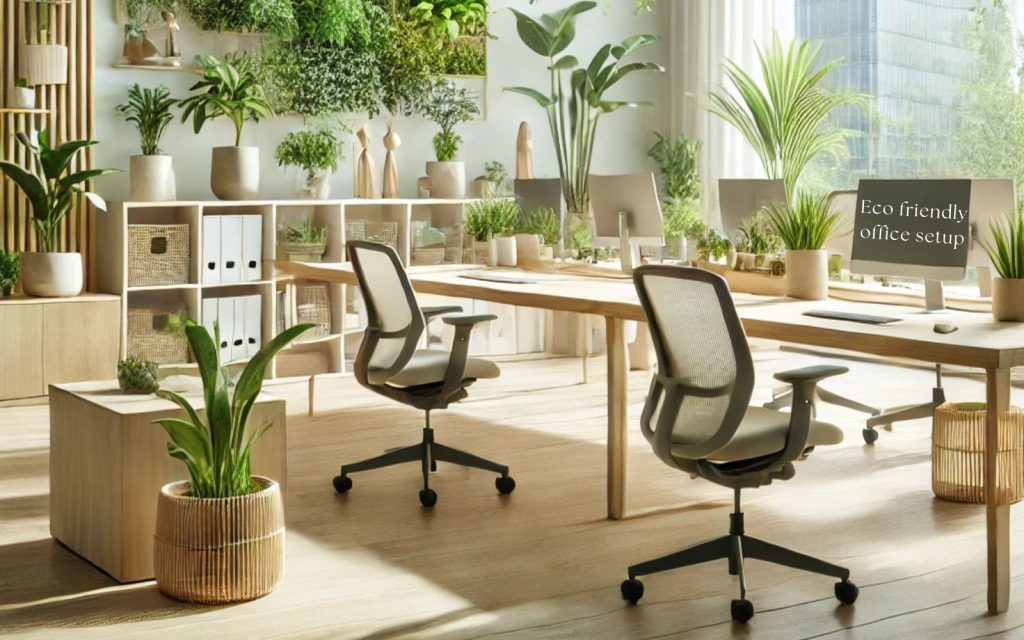
Have you ever considered how your workspace design could help the planet? Green workspace design strategies are more than a trend; they reduce energy consumption, lower carbon footprints, and create a healthier environment.
Using energy-efficient lighting, maximizing natural light, incorporating eco-friendly materials like recycled paper and reclaimed wood, and adding potted plants or green walls can improve employee well-being and productivity, boost air quality, and efficiently use materials that would otherwise go to waste.
Sustainable practices like waste reduction, recycling programs, and natural ventilation reduce greenhouse gas emissions and lead to substantial cost savings.
In this article, we’ll explore how green office design creates sustainable spaces that boost productivity and benefit the planet.
Key Takeaways – How to Create an Eco-Friendly Office
- A green workspace promotes sustainability and employee well-being.
- Simple modifications like adding plants and optimizing lighting can create a huge positive impact.
- Energy efficiency and waste reduction are key to eco-friendly office design.
- Using eco-friendly, recyclable materials in furniture and decor can influence the overall environmental footprint.
Effective Green Workspace Design Strategies By 8 Steps
Effective Green Workspace Design Strategies focus on creating eco-friendly office environments that reduce energy consumption, minimize waste, and promote sustainability. Let’s discuss one-by-one strategy for more clarification.
1. Start with Energy-Efficient Lighting
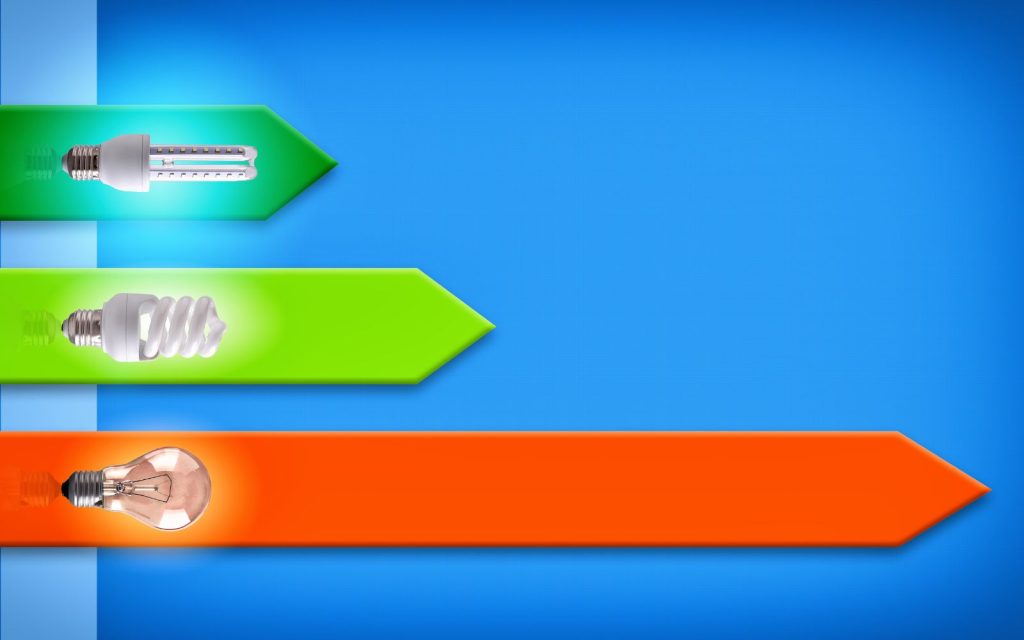
Lighting is one of the easiest ways to make a workspace more eco-friendly. Energy-intensive lighting is a staple of most homes and workplace configurations.
But with energy-efficient options like LED bulbs or smart lighting systems, you can lower energy consumption while maintaining a well-lit, productive environment.
- Why It Matters: Energy-efficient lighting reduces electricity consumption and greenhouse gas emissions.
- How to Implement: Swap out traditional bulbs with LEDs or CFLs (Compact Fluorescent Lamps). Use smart lighting controls to adjust brightness based on natural light and work schedules.
Pro Tip: Use task lighting, like desk lamps, to focus light where it’s needed instead of lighting up an entire room.
2. Introduce Natural Elements

Bringing nature into the office boosts aesthetics, improves air quality, and enhances mood. Incorporating plants into your environment is one of the best green office design strategies. Plants act as natural air purifiers, absorbing toxins and releasing oxygen.
- Why It Matters: Improves indoor air quality and adds a calming, natural vibe to the workspace.
- How to Implement: Start small with desk plants like succulents, or go big with statement plants like ficus, monstera, or rubber plants in common areas.
Pro Tip: For maximum environmental pay-off, choose low-maintenance, air-purifying plants like snake plants, aloe vera, or peace lilies.
3. Choose Sustainable Furniture
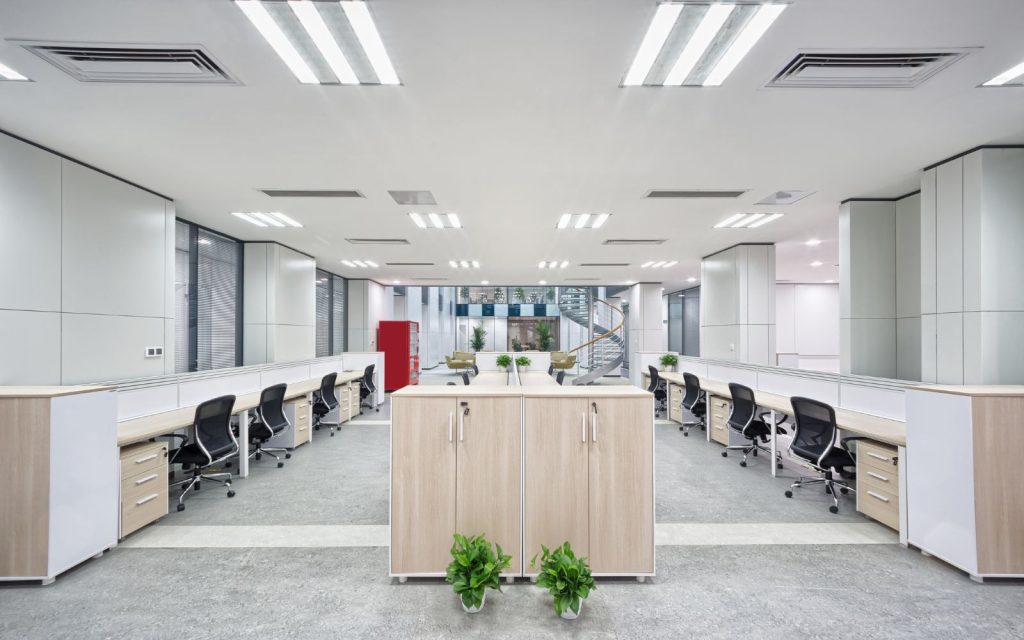
Furniture plays a significant role in workspace design. You can significantly reduce your environmental footprint by selecting sustainable furniture made from natural materials. Look for furniture made from recycled or renewable materials, or go for second-hand options that can be upcycled.
- Why It Matters: Reduces waste and the demand for non-renewable resources.
- How to Implement: Opt for desks, chairs, and shelving made from FSC-certified wood (Forest Stewardship Council), bamboo, or recycled materials. Avoid plastic or synthetic options wherever possible.
Pro Tip: Modular furniture that can be reconfigured or reused differently adds flexibility and sustainability.
4. Embrace Minimalism for a Cleaner Workspace

Green design is about what you add and what you remove. A clutter-free, minimalist workspace helps conserve energy and materials while boosting focus and reducing stress.
- Why It Matters: Using fewer materials means less waste, less mental clutter, and less resource consumption.
- How to Implement: Declutter your desk and storage areas, keeping only what’s essential. Avoid unnecessary decor and office supplies, and choose functional, multi-use items.
Pro Tip: Implement digital solutions to reduce paper and stationery use, such as cloud storage and e-signatures.
5. Optimize Ventilation and Air Quality

Establishing a green, healthy workspace requires good air quality. Poor ventilation can lead to the buildup of indoor pollutants, which can affect the environment and employees’ well-being.
- Why It Matters: Better air quality leads to a healthier and more productive work environment.
- How to Implement: Ensure proper ventilation by using energy-efficient HVAC systems or air purifiers. Opening windows for fresh air and positioning plants near ventilation sources can also help.
Pro Tip: Use non-toxic cleaning products to keep your space clean without releasing harmful chemicals into the air.
6. Utilize Recycled and Eco-Friendly Materials
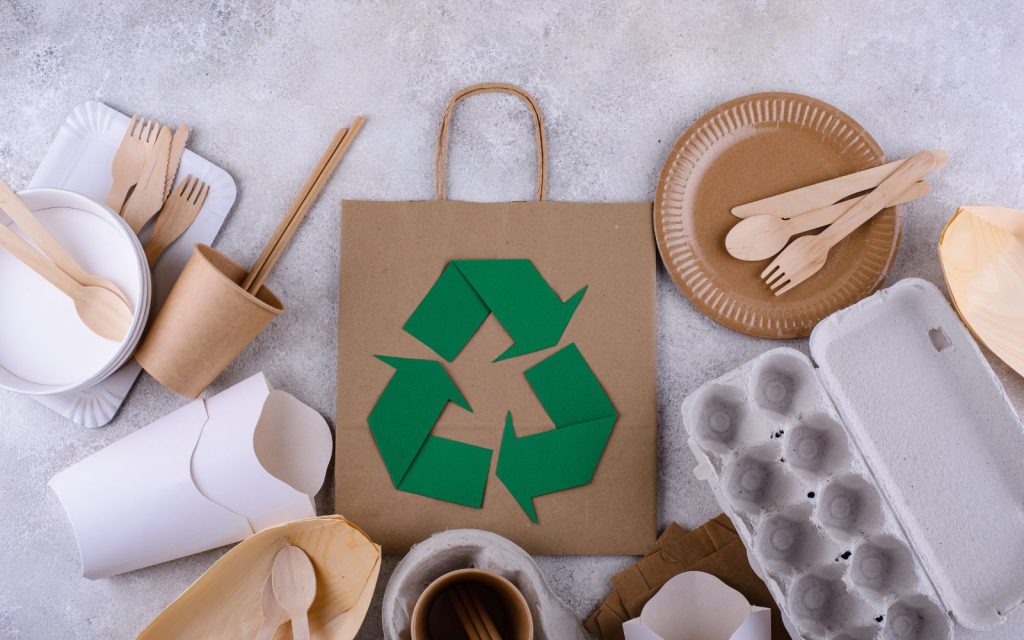
Another effective green workspace design strategy is using recycled or eco-friendly materials for everything from office supplies to flooring and wall coverings. Many modern materials are made from recycled content or renewable resources, helping to reduce your workspace’s environmental impact.
- Why It Matters: Recycled and eco-friendly materials reduce waste and the demand for virgin resources.
- How to Implement: Use recycled paper, pens, and office supplies. Opt for carpets, paints, and wallpapers that are VOC-free (Volatile Organic Compounds) and made from sustainable materials.
Pro Tip: Cork, bamboo, and reclaimed wood make great eco-friendly flooring options.
7. Implement Waste Reduction Strategies
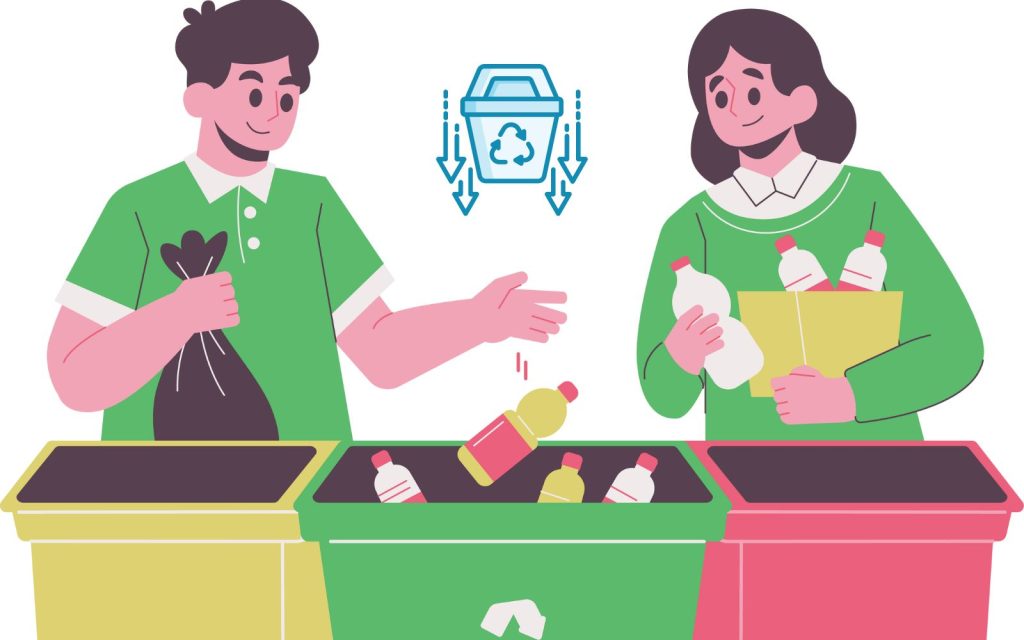
Every office generates waste, but green workspace design includes strategies to effectively reduce, reuse, and recycle that waste. You can minimize your environmental impact by implementing a clear waste management plan.
- Why It Matters: Waste reduction decreases landfill use and lowers carbon emissions.
- How to Implement: Set up recycling stations for paper, plastic, and e-waste. Encourage the use of reusable water bottles, coffee mugs, and lunch containers.
Pro Tip: Switch to digital invoicing, marketing, and filing to reduce paper waste.
8. Incorporate Renewable Energy

If you have the option, incorporating renewable energy sources into your workspace can have a huge impact. Solar panels, wind energy, or even community renewable energy programs are all excellent ways to power your office sustainably.
- Why It Matters: Renewable energy reduces dependency on fossil fuels and cuts greenhouse gas emissions.
- How to Implement: Install solar panels if you’re setting up a workspace at home or suggest green energy programs to your office management.
Pro Tip: Look into community solar programs that allow you to invest in solar energy without installing panels on-site.
Boosting Workplace Productivity with Green Elements
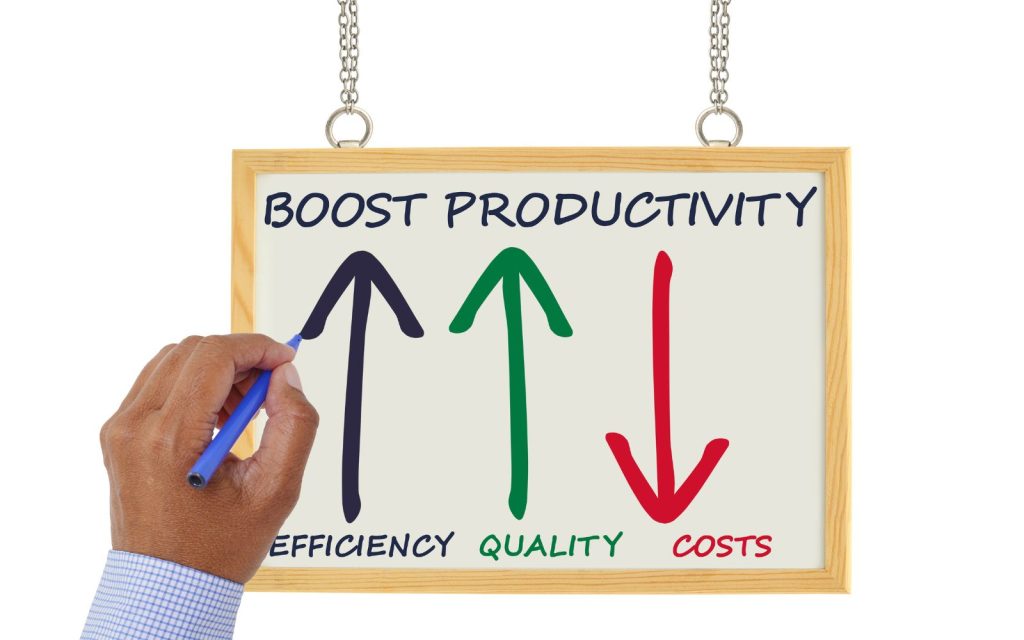
Incorporating green elements like plants and natural light into the workplace can boost productivity by creating a more relaxing and refreshing environment, helping employees feel more energized and focused.
Incorporating Views of Nature for Inspiration

Incorporating views of nature into office design can profoundly impact employee productivity and well-being. Studies have shown that employees with access to natural light and views of nature are more productive, have better moods, and experience reduced stress levels.
Moreover, incorporating natural elements, such as plants and green walls, can also improve indoor air quality, reduce noise levels, and create a sense of calm. By incorporating views of nature into office design, companies can create a space that inspires creativity, boosts productivity, and supports the overall well-being of employees.
Pro Tip: Position workstations near windows to maximize natural light and consider adding green spaces like indoor gardens or living walls to bring the outdoors inside.
Summary
Creating a green workspace is an intelligent choice for the environment, and it also benefits health, productivity, and long-term sustainability. By focusing on energy efficiency, sustainable materials, and waste reduction, you can design a workspace that’s eco-friendly, productive, and comfortable.
Frequently Asked Questions
What Is a Green Workspace?
A green workspace is an office or workspace designed to minimize environmental impact. It focuses on energy efficiency, sustainable materials, and waste reduction while promoting a healthier work environment.
How Can Plants Improve a Workspace?
Plants improve indoor air quality by absorbing toxins and releasing oxygen. They also create a calming atmosphere that can reduce stress and increase focus.
What Are Some Eco-Friendly Furniture Options?
Eco-friendly furniture options include those made from FSC-certified wood, bamboo, recycled materials, or second-hand items. Modular furniture is also sustainable because it can be easily reconfigured or reused.
How Can I Reduce Waste in My Office?
You can reduce waste by implementing recycling programs, using reusable containers, and switching to digital systems to reduce paper use. Also, opting for eco-friendly office supplies and encouraging employees to bring their own food containers and bottles helps reduce waste.
Are Energy-Efficient Lighting Systems Worth the Investment?
Yes, energy-efficient lighting systems like LEDs or bright lights reduce energy consumption, lower electricity bills, and last longer, making them a worthwhile investment for any workspace.

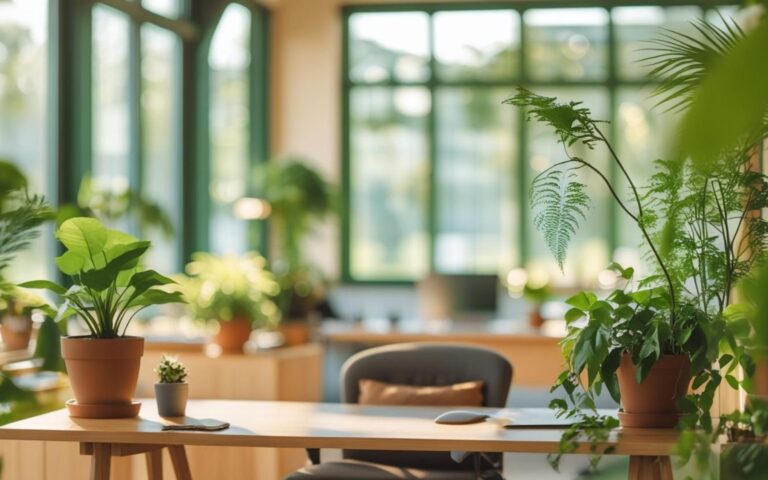



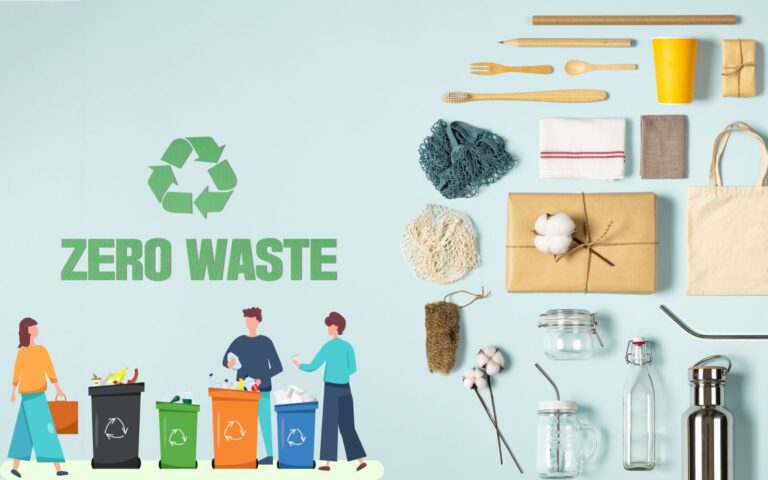
One Comment